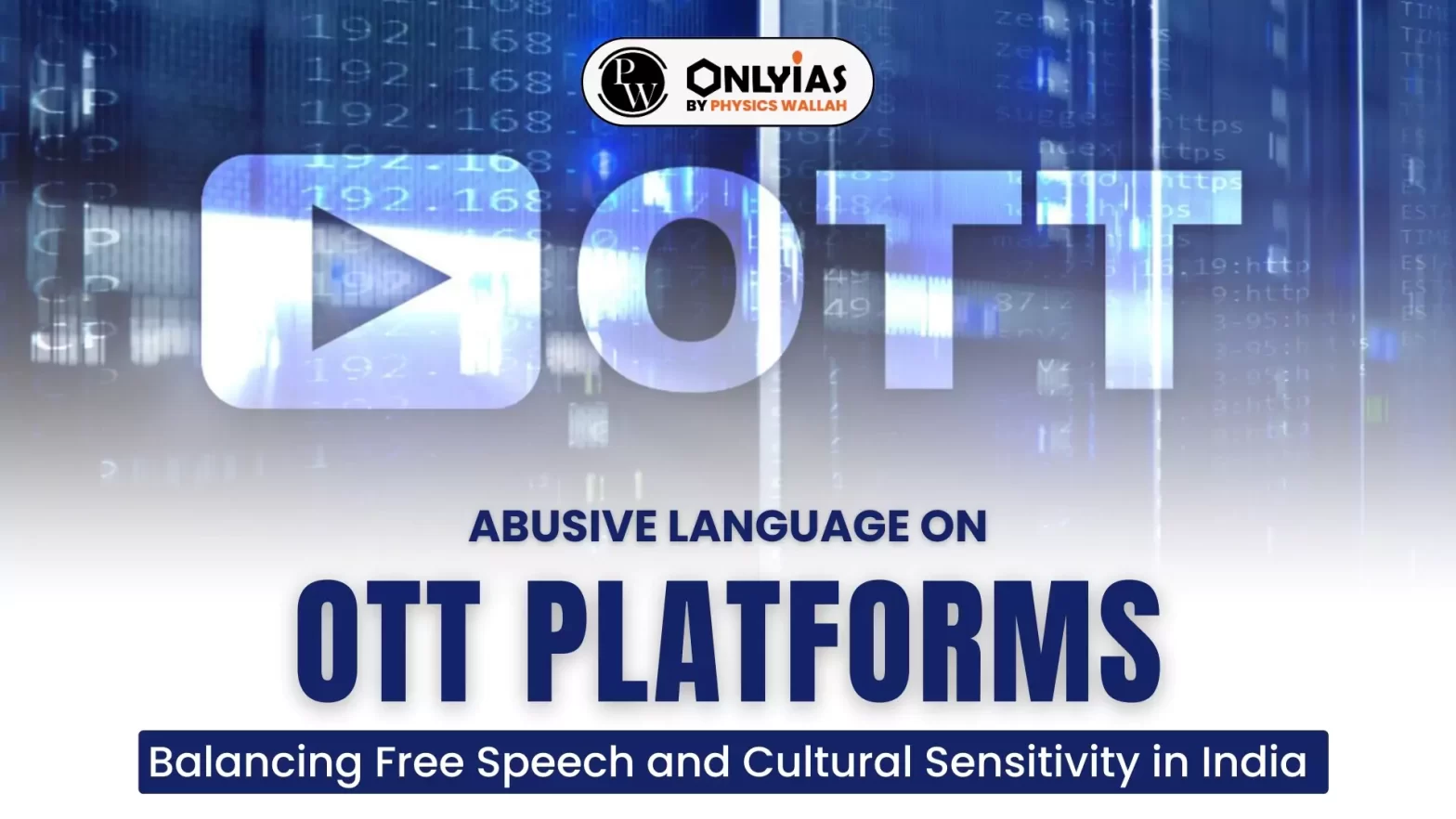Context
Recently, the Supreme Court has given its verdict that the use of abusive language on OTT platforms cannot be regarded as a criminal offense, as it would lead to an infraction of free speech and violate artistic creativity.
- The coexistence of freedom of speech and cultural sensitivity presents a complex and ongoing debate about whether under the guise of freedom of speech, we can use foul language that may be affecting the cultural values of people.
Enroll now for UPSC Online Course
Exploring the Dynamics of OTT Platforms in Indian Entertainment
- OTT Platforms: OTT platforms are audio and video hosting and streaming services which started out as content hosting platforms
- Emergence of OTT Platforms: The Over-the-Top (OTT) platform has revolutionized India’s entertainment landscape and has created a niche for itself among audiences.
- Embracing Diversity and Inclusivity: It is considered to be progressive, realistic, has variety and also caters to the needs of all age groups.
- Proliferation of Abusive Language: However, there has been a lot of noise about the proliferation of abusive language in many of the web series that have raised a lot of general and even legal objections.
Justification of Abusive Language on OTT Platforms
- Impact in OTT Content Perception: The use of abusive language in OTT content shapes how audiences perceive the characters, themes and overall tenor of the content.
- Commercial Viability and Audience Engagement: It may add authenticity to certain narratives or characters. If nothing else, it has become a fashion statement and is more saleable.
- Reflecting Existing Societal Norms: The onus of the use of such language in society does not lie on OTT, it reflects something already present, but it has certainly contributed to making it more prominent.
Major Problems Associated with Using Abusive Language on OTT Platforms
- Negative Externalities on Society: It can be categorized as a demerit good with a high order of negative externality.
- Vulnerability of the Young Generation:
- Early Exposure to Abusive Language: The young generation, at tender ages, is exposed to such language and easily gets influenced by it.
- Implications for Professional and Academic Standards: It can become pervasive in everyday usage, hindering effective articulation of thoughts and ideas and challenging the professional and academic standards.
- Influence of OTT on Family and Kids:
- Impact on Social Interactions:It can be detrimental to social interactions and emotional well-being, hampering overall personality development.
- Limits of Statutory Warnings in OTT Content: Simply providing a statutory warning of the ‘content not suitable for a certain age’, does not complete the responsibility of the makers.
- Pervasive Nature of Internet Access: With the availability of the internet and its easy access via gadgets in every home, it is practically not possible to refrain kids from watching such content every time.
- Changing Dynamics in Family Structures: With the nuclear family setups and working parents’ culture gaining strength, it becomes even more difficult.
Duality of India’s Education Reforms
- Introduction of the National Education Policy: We in India have reformed the education system with the introduction of the National Education Policy and Indian Knowledge System.
- Upholding Indian Ethos: It thrives on providing a high-quality education system rooted in Indian ethos contributing to transforming India into a value-based superpower.
- Coexistence of Cultural Revival and Language Standards: So, while at one place when we are trying to imbibe and revive our rich heritage, at the same time, we are defending, if not promoting, the use of indecent language.
- Ethical Considerations Regarding Foul Language Usage: Some viewers avoid using such foul language, as they consider it to be morally incorrect and undignified.
Enroll now for UPSC Online Classes
Conclusion
By promoting dialogue, advocating for ethical content creation, and instilling values of respect and dignity, we can strive towards a media landscape that enriches rather than diminishes our cultural heritage and societal fabric.
Also Read: Telecommunication Bill 2023: Key Features And Concerns
| Prelims PYQ (2017):
Which one of the following objectives is not embodied in the Preamble to the Constitution of India?
(a) Liberty of thought
(b) Economic liberty
(c) Liberty of expression
(d) Liberty of belie
Ans: (b) |
![]() 22 Apr 2024
22 Apr 2024

